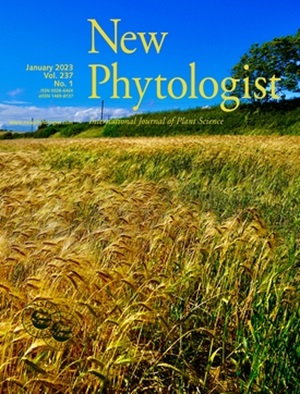Gametophyte and sporophyte morphology are phylogenetically correlated in mosses, indicating coadaptation and parent–offspring conflict
IF 8.3
1区 生物学
Q1 PLANT SCIENCES
引用次数: 0
Abstract
- Parent–offspring relationships present a paradox wherein parents must balance limited resources between provisioning their offspring to increase their chances of survival and maturation, and reserving resources for their own survival and future reproduction. Bryophytes provide a unique system to explore this relationship due to the dependency of sporophytes on parental gametophytes throughout their lifespan.
- We investigate the morphological evolution of gametophyte and sporophyte characters to test for evidence of coadaptation in the Dicranaceae Schimp. and Grimmiaceae Arn. We also examine these morphological features in Grimmiaceae species with different sexual systems to test for higher levels of parent–offspring conflict in species that are exclusively outcrossing. Our study is the first to test this prediction with empirical data.
- Our study reveals significant correlations between parental gametophyte and offspring sporophyte morphology, which provides evidence of coadaptation. We found that species with unisexual gametophytes have larger calyptrae, which may decrease offspring resource acquisition, as well as larger capsules and larger setae, which may increase resource acquisition, than species with bisexual gametophytes.
- These findings suggest that the sexual system influences the relationship between gametophyte and sporophyte morphology, indicating higher levels of parent–offspring conflict in outcrossing species.
求助全文
约1分钟内获得全文
求助全文
来源期刊

New Phytologist
生物-植物科学
自引率
5.30%
发文量
728
期刊介绍:
New Phytologist is an international electronic journal published 24 times a year. It is owned by the New Phytologist Foundation, a non-profit-making charitable organization dedicated to promoting plant science. The journal publishes excellent, novel, rigorous, and timely research and scholarship in plant science and its applications. The articles cover topics in five sections: Physiology & Development, Environment, Interaction, Evolution, and Transformative Plant Biotechnology. These sections encompass intracellular processes, global environmental change, and encourage cross-disciplinary approaches. The journal recognizes the use of techniques from molecular and cell biology, functional genomics, modeling, and system-based approaches in plant science. Abstracting and Indexing Information for New Phytologist includes Academic Search, AgBiotech News & Information, Agroforestry Abstracts, Biochemistry & Biophysics Citation Index, Botanical Pesticides, CAB Abstracts®, Environment Index, Global Health, and Plant Breeding Abstracts, and others.
 求助内容:
求助内容: 应助结果提醒方式:
应助结果提醒方式:


